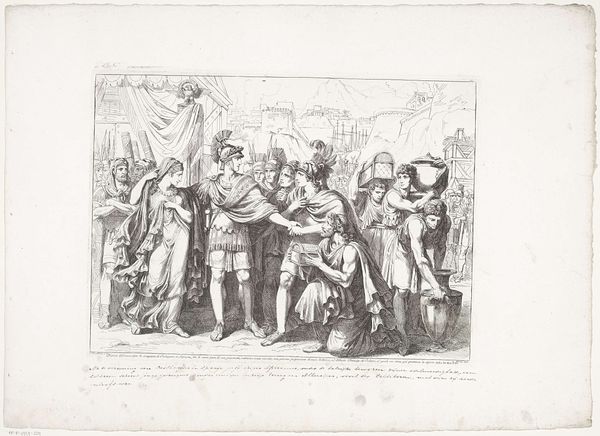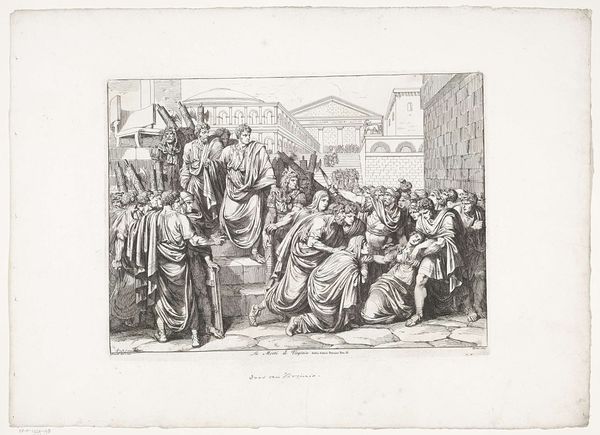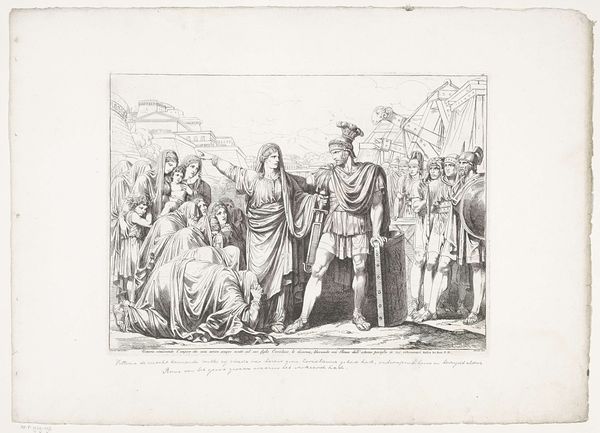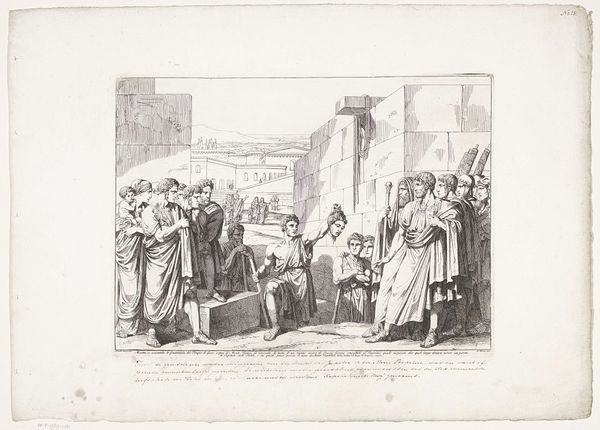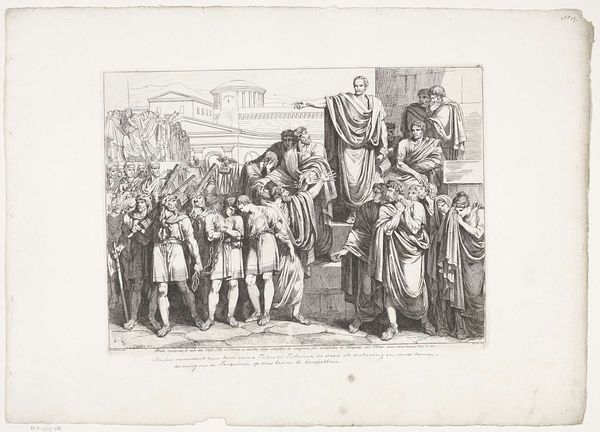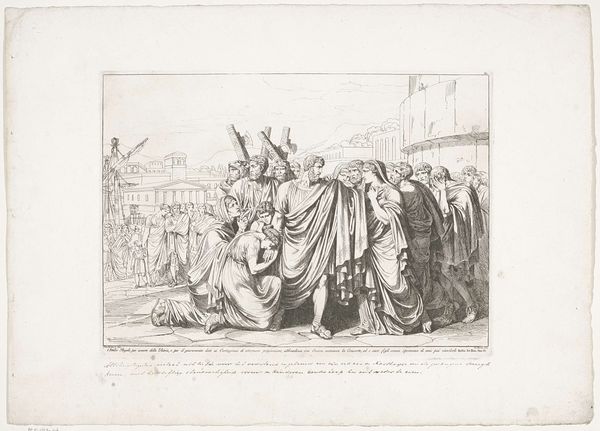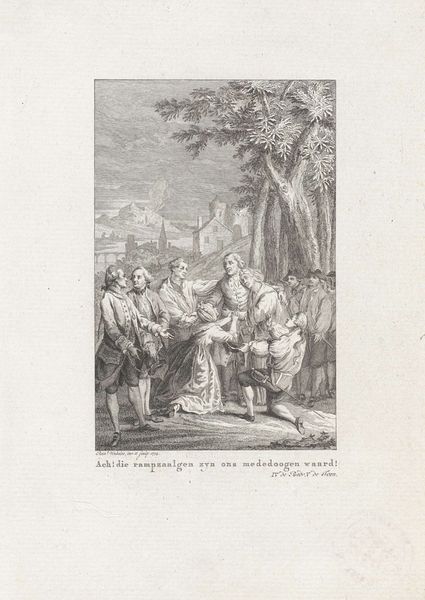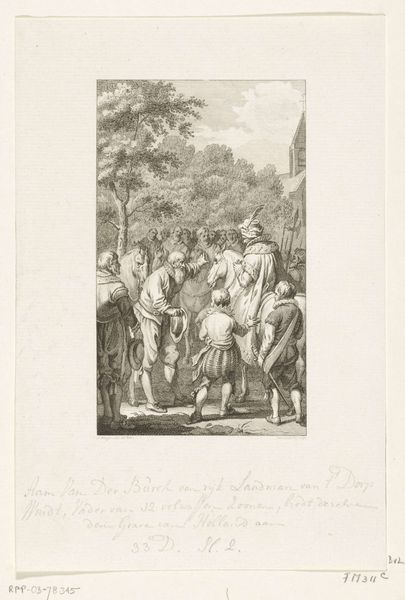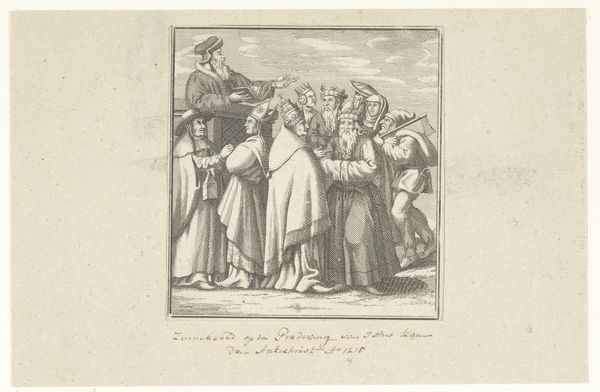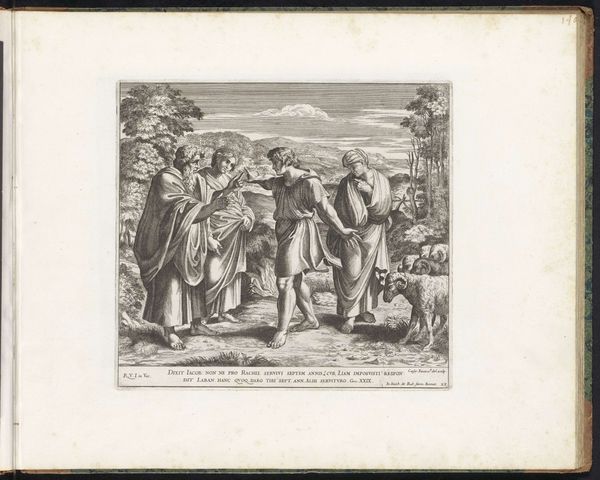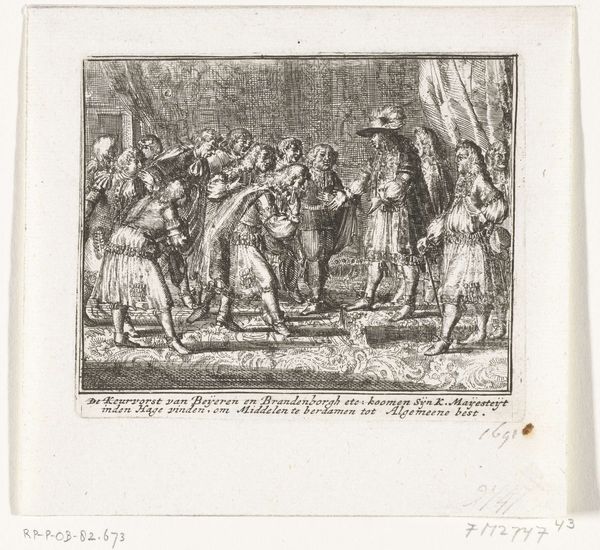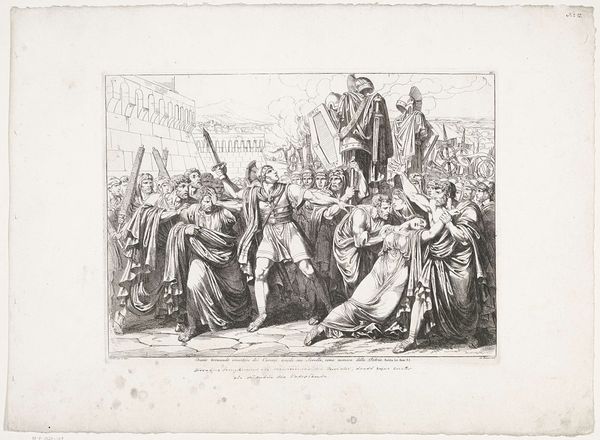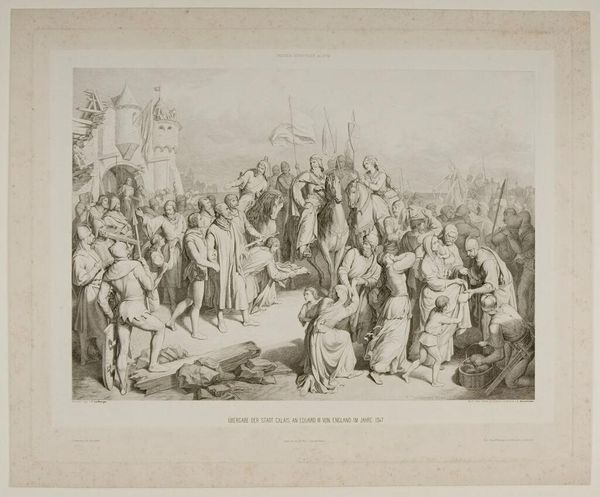
print, engraving
#
neoclacissism
#
narrative-art
# print
#
old engraving style
#
landscape
#
figuration
#
form
#
line
#
history-painting
#
engraving
Dimensions: height 315 mm, width 425 mm
Copyright: Rijks Museum: Open Domain
Curator: Allow me to introduce "Lucius Quintius Cincinnatus wordt van de ploeg gehaald," or "Lucius Quintius Cincinnatus Called from the Plow," an engraving by Bartolomeo Pinelli from 1818. Editor: There’s something inherently powerful in the stark linearity of the engraving style. The very act of marking a surface with these precise, intentional lines gives the image a captivating weight. Curator: Indeed. Observe how Pinelli utilizes line weight and density to articulate form. Notice how the cross-hatching defines the drapery, creating a complex interplay of light and shadow. The landscape's recession into depth is particularly effective, built through incremental changes in line. Editor: And the visual vocabulary! We have the figure of Cincinnatus himself, the plowing tools right by his side. I wonder what meanings a 19th-century audience would have layered on these signs? It’s potent cultural currency to evoke an older Roman hero. Curator: Certainly. The formal composition subtly reinforces the narrative. Cincinnatus stands on the left, framed by the oxen and the open landscape. A group of senators clad in togas gestures urgently. It presents a dialogue, one framed as citizen and state, and an immediate call to service. Editor: The contrast between the figure's simple tunic and the senators’ ceremonial robes strikes me. Cincinnatus' clothing signifies his close contact to nature, connoting moral incorruptibility. Their finery marks them as patricians— the Roman ruling class, whose association to excess would have been well-known. Curator: I agree; his physical presence mirrors an honest commitment to work, while their garments suggest societal power and possibly its abuses, by extension. Editor: So this print—part history painting, part landscape—served to amplify symbols that praised the figure and criticized the power structure. Curator: The genius lies in how those meanings are activated via careful composition and formal arrangements. Each line builds up towards a whole whose subject exceeds a single aesthetic experience. Editor: Reflecting upon this artwork now, I appreciate Pinelli's intentionality, giving new life to Cincinnatus' cultural memory and significance by capturing a defining moment through calculated arrangement of lines and forms. Curator: Precisely; this print, therefore, reminds us how vital close observation of the aesthetic dimensions is, leading to expanded narrative interpretations.
Comments
No comments
Be the first to comment and join the conversation on the ultimate creative platform.
